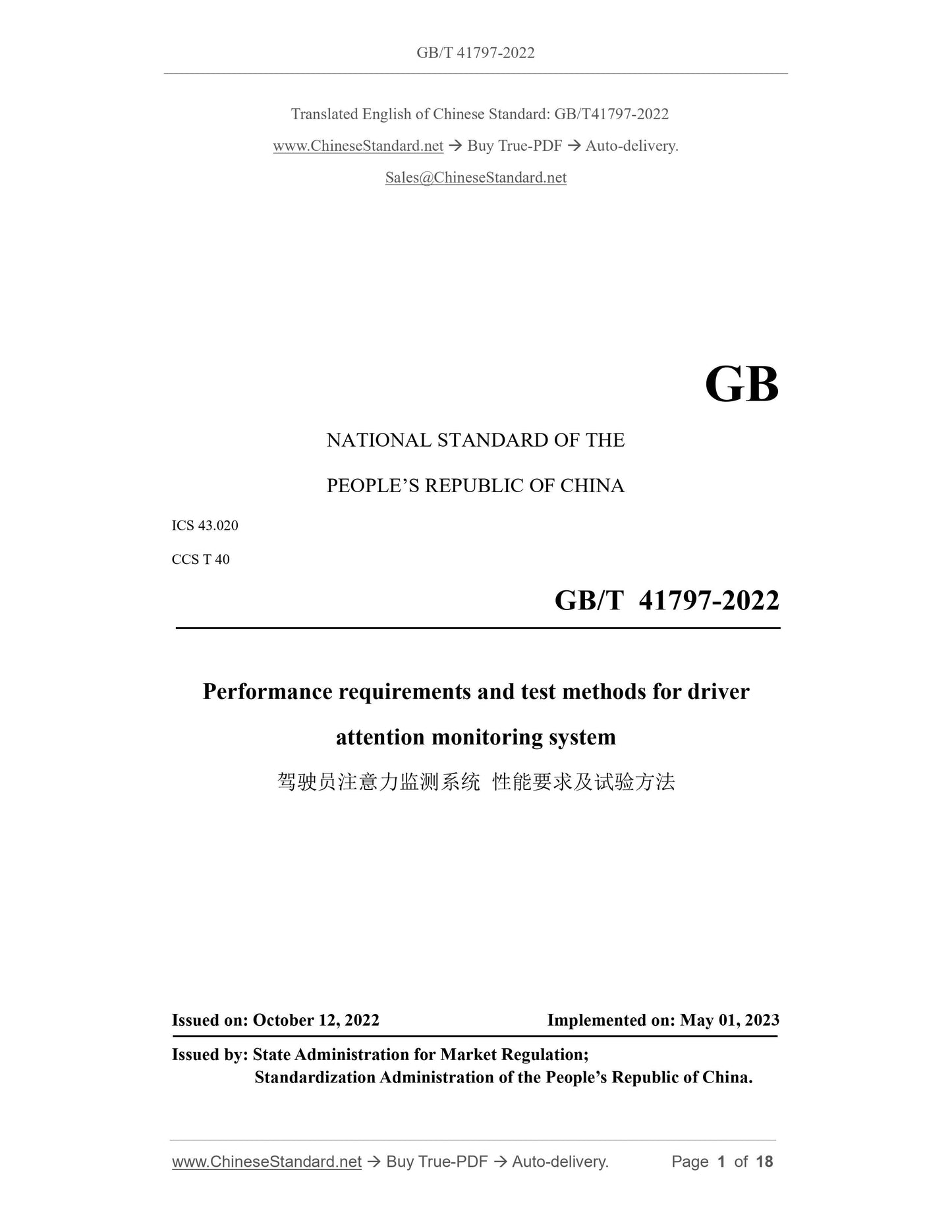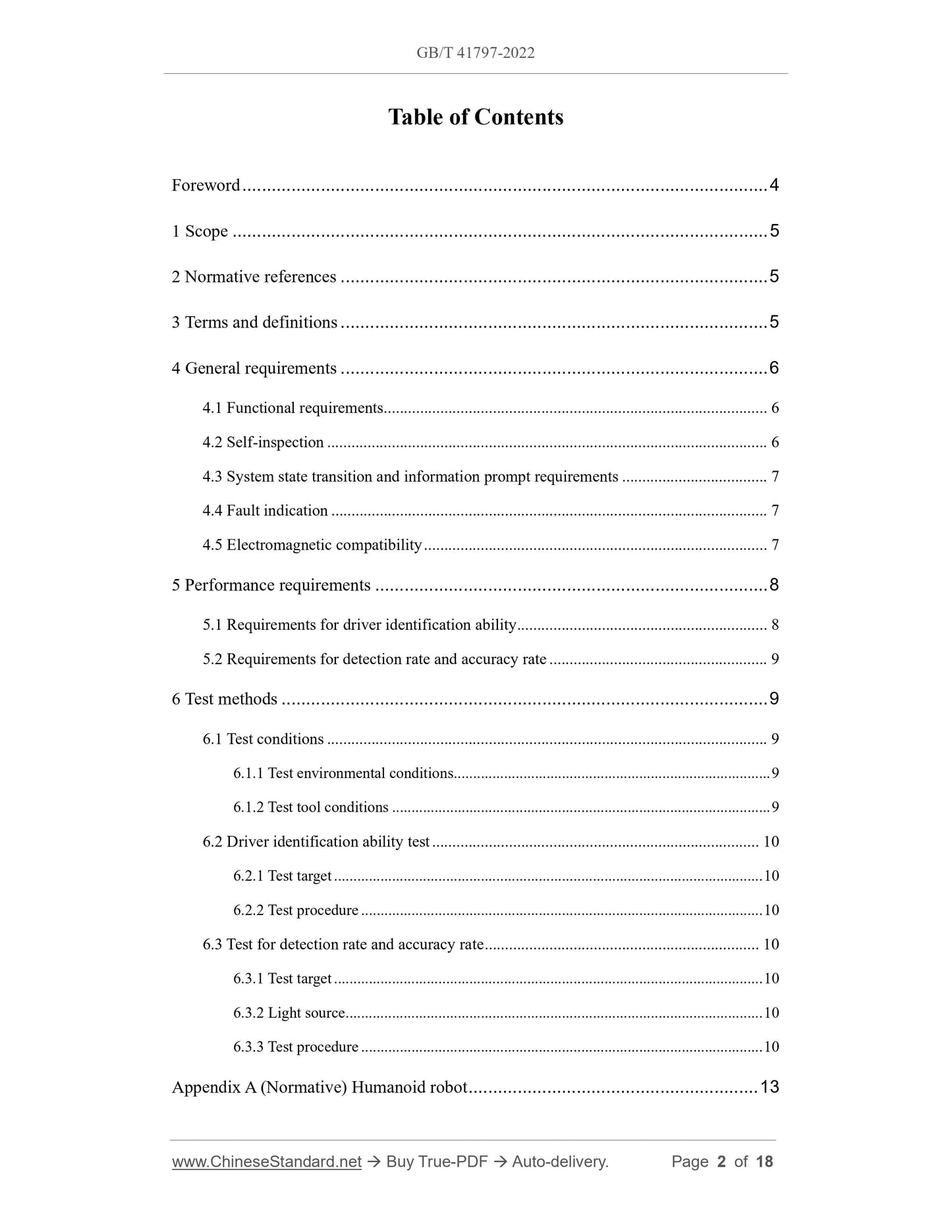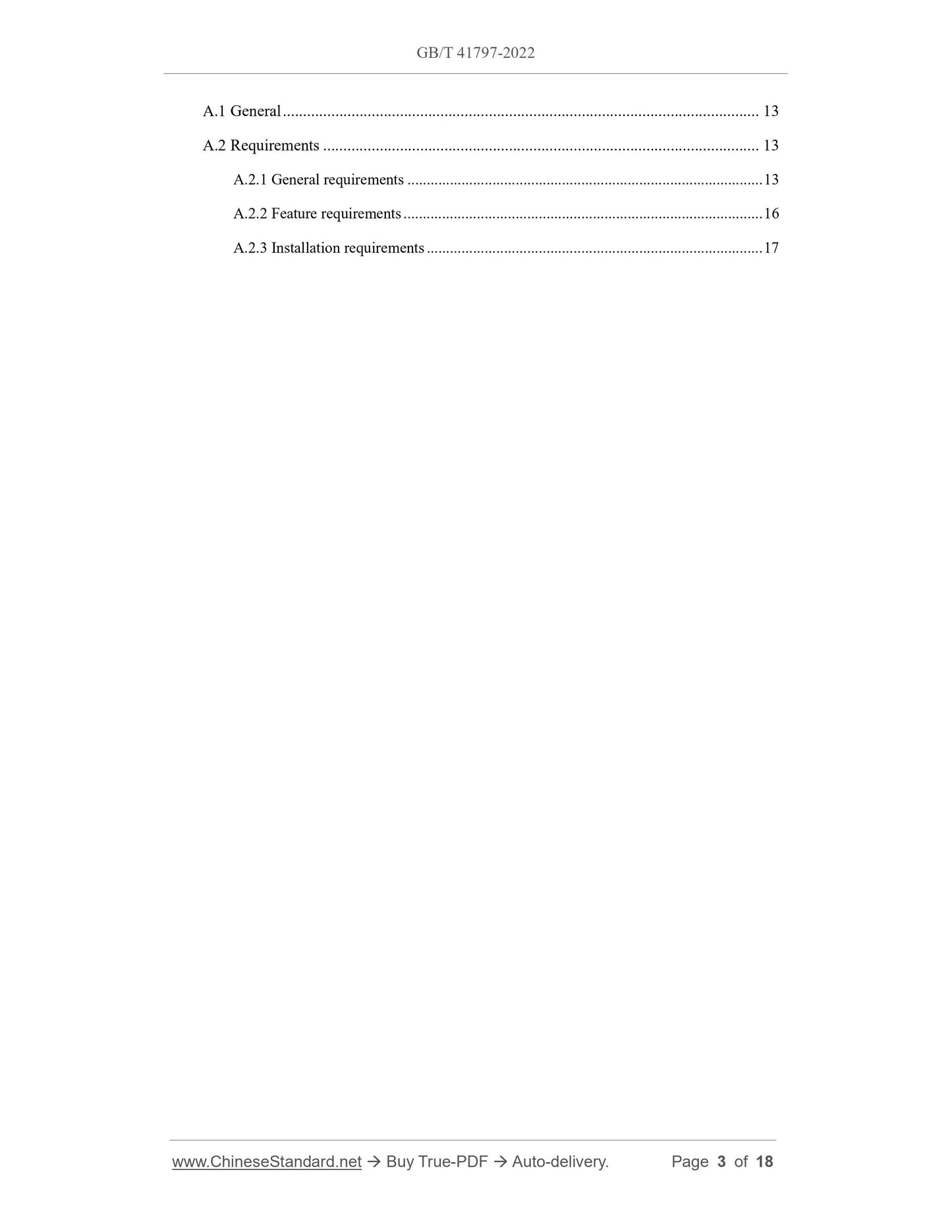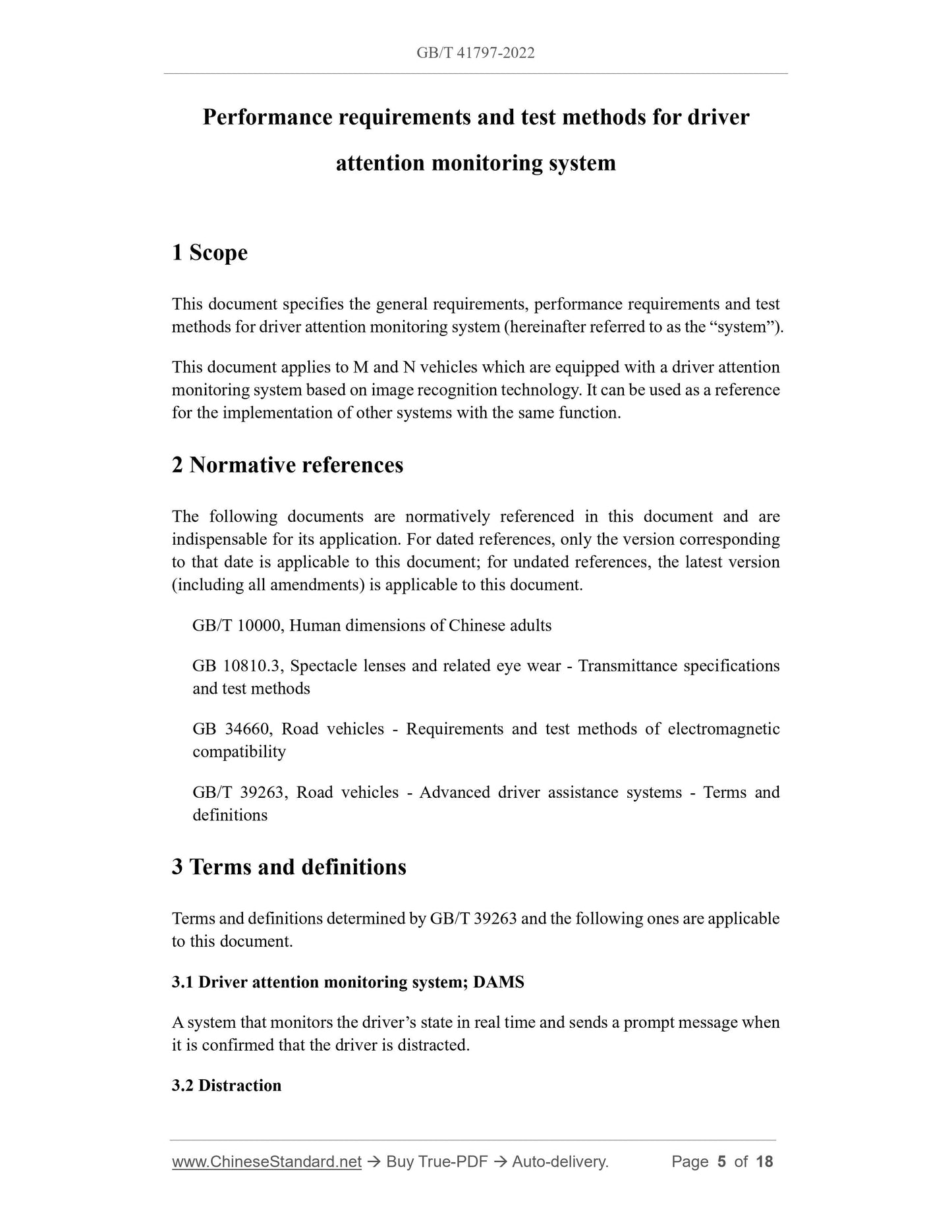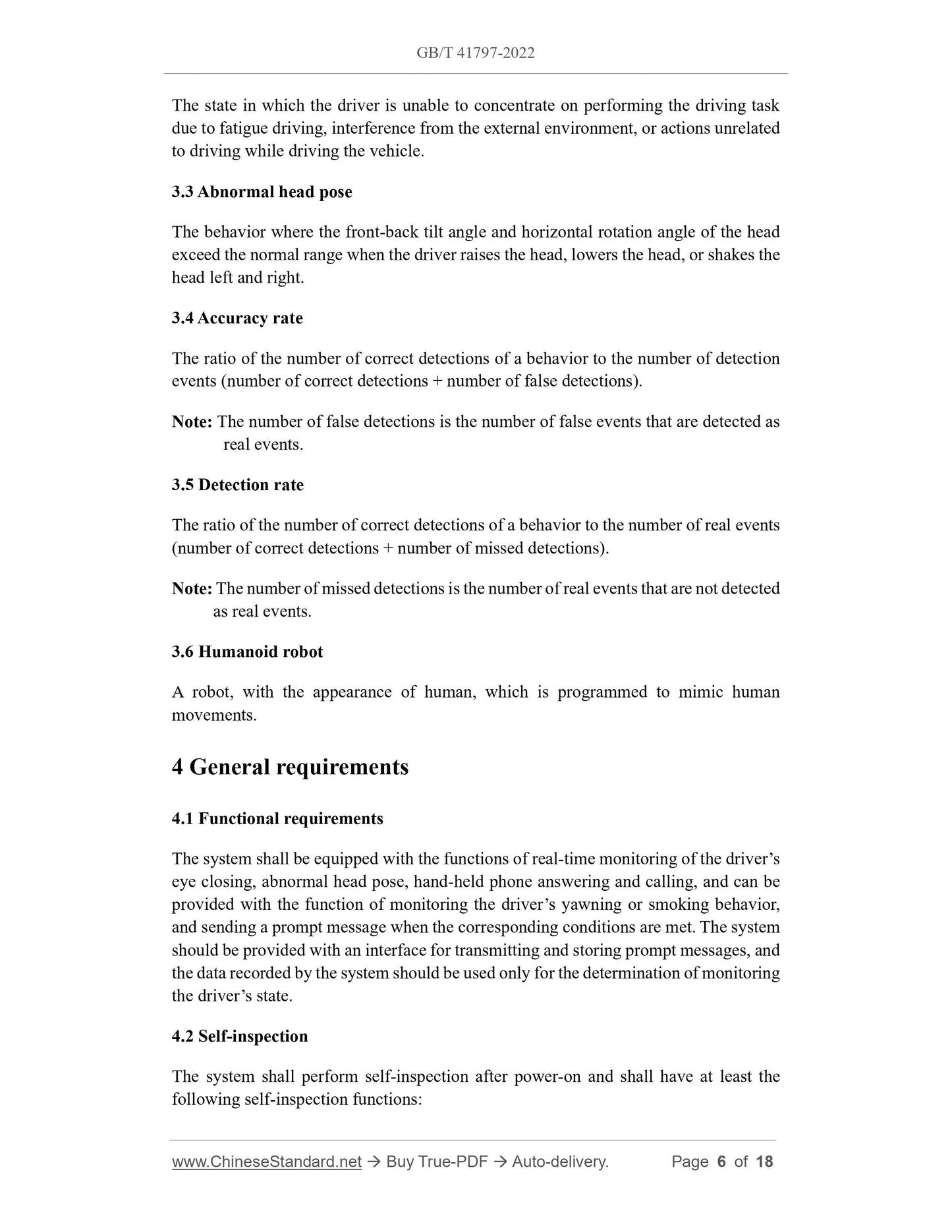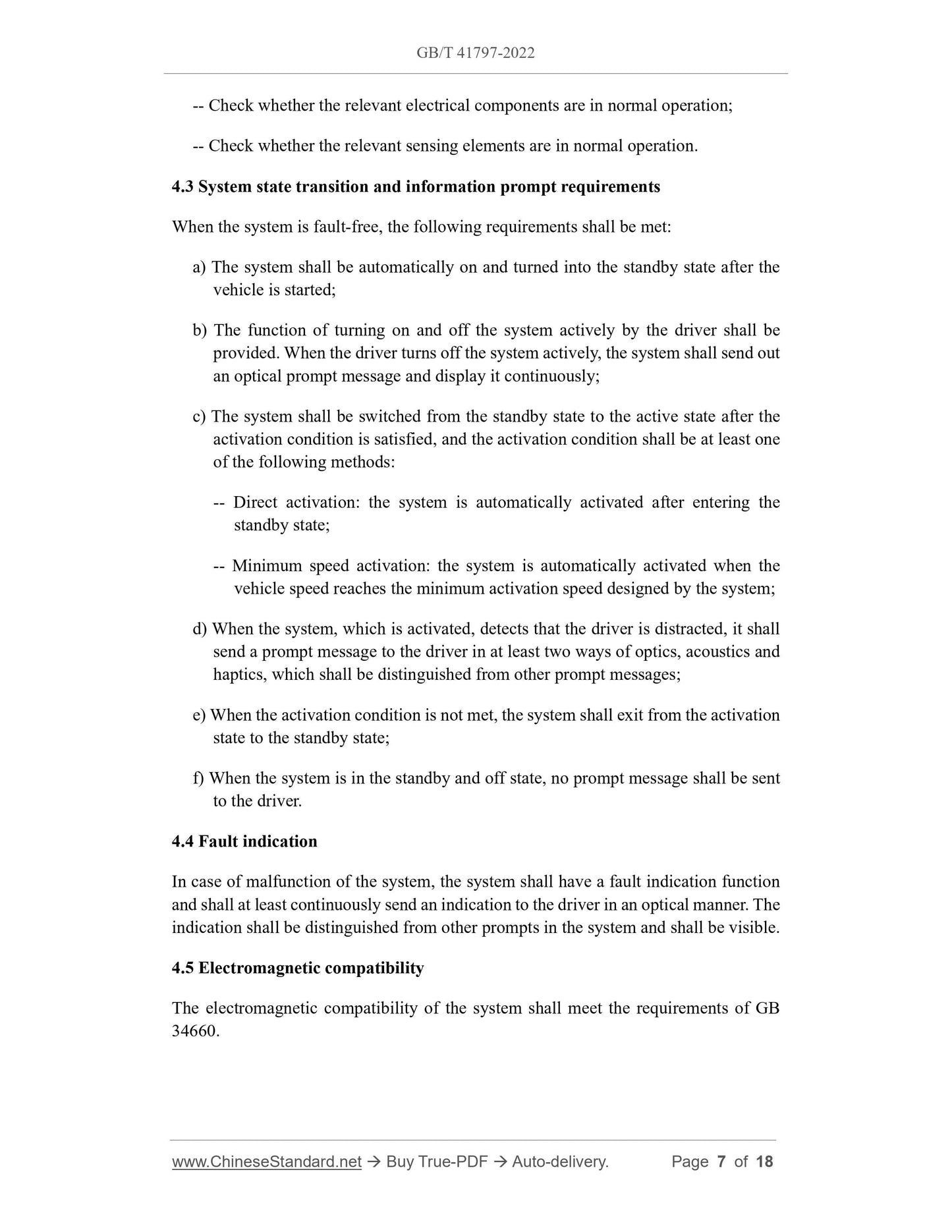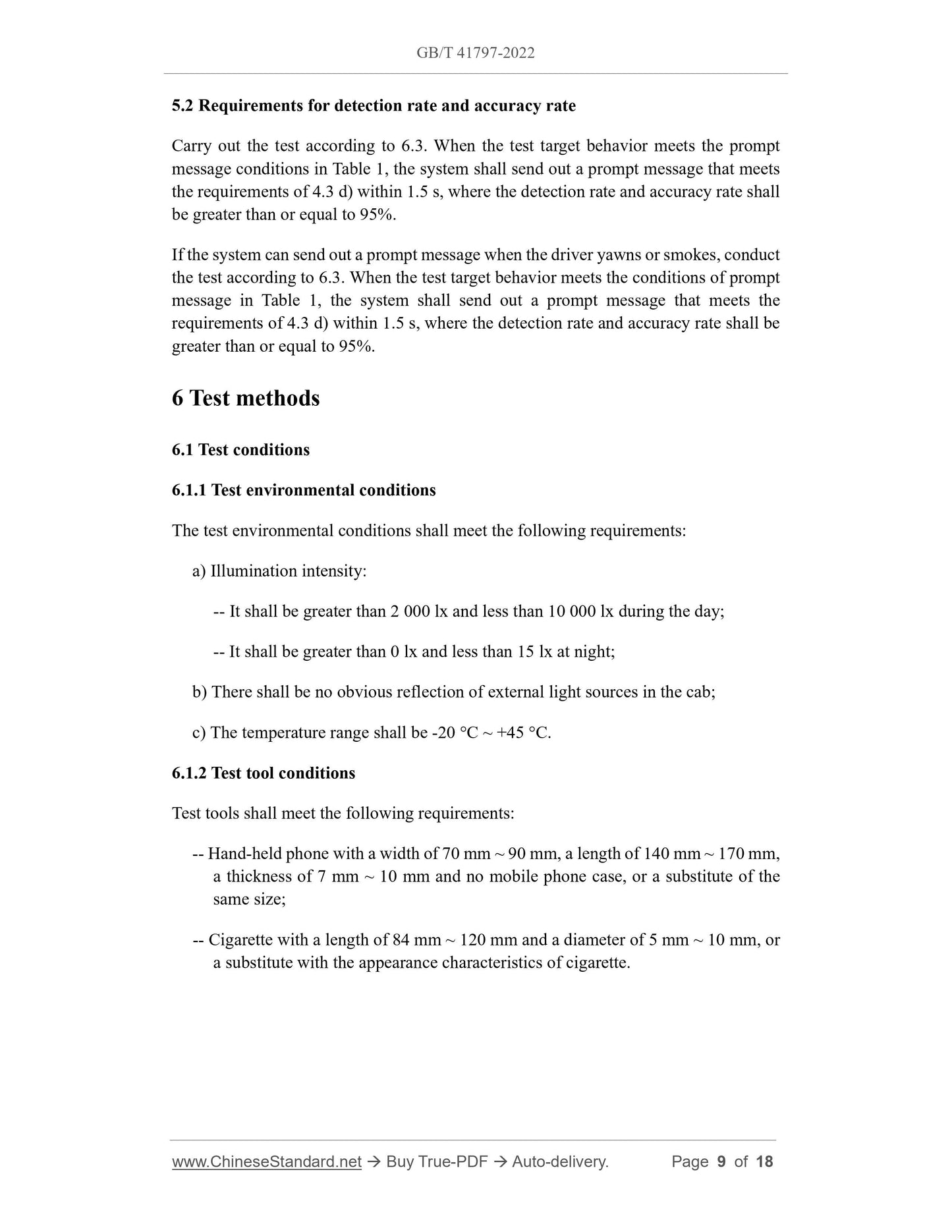1
/
of
7
www.ChineseStandard.us -- Field Test Asia Pte. Ltd.
GB/T 41797-2022 English PDF (GB/T41797-2022)
GB/T 41797-2022 English PDF (GB/T41797-2022)
Regular price
$155.00
Regular price
Sale price
$155.00
Unit price
/
per
Shipping calculated at checkout.
Couldn't load pickup availability
GB/T 41797-2022: Performance requirements and test methods for driver attention monitoring system
Delivery: 9 seconds. Download (and Email) true-PDF + Invoice.Get Quotation: Click GB/T 41797-2022 (Self-service in 1-minute)
Newer / historical versions: GB/T 41797-2022
Preview True-PDF
Scope
This document specifies the general requirements, performance requirements and testmethods for driver attention monitoring system (hereinafter referred to as the “system”).
This document applies to M and N vehicles which are equipped with a driver attention
monitoring system based on image recognition technology. It can be used as a reference
for the implementation of other systems with the same function.
Basic Data
| Standard ID | GB/T 41797-2022 (GB/T41797-2022) |
| Description (Translated English) | Performance requirements and test methods for driver attention monitoring system |
| Sector / Industry | National Standard (Recommended) |
| Classification of Chinese Standard | T40 |
| Classification of International Standard | 43.020 |
| Word Count Estimation | 14,143 |
| Date of Issue | 2022-10-14 |
| Date of Implementation | 2023-05-01 |
| Issuing agency(ies) | State Administration for Market Regulation, China National Standardization Administration |
Share
